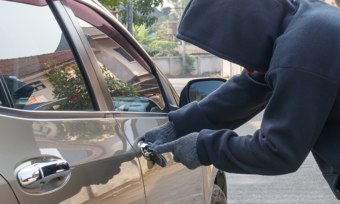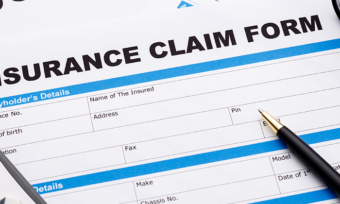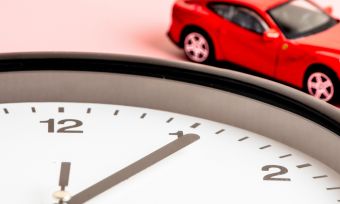In many countries, if you drive your vehicle on the road, it’s compulsory to have some level of car insurance. However, it’s not a legal requirement in New Zealand. But should you still consider taking out an insurance policy for your vehicle if you drive on the roads in Aotearoa? Canstar explores everything you need to know about car insurance in this simple guide.
How does car insurance work?
A car insurance policy provides a level of financial cover to pay for damage to your own vehicle, and for any damage you cause to other people’s cars or property, in the event of an accident.
For a fixed premium, either paid annually or in instalments, an insurance provider agrees to cover damages up to a limit outlined in your policy. To reduce the cost of the insurance cover, you can usually set an excess, which is the sum you must pay out of your own pocket for any repairs:
- Premium – the amount you pay to stay insured. A premium can generally be paid fortnightly, monthly or yearly.
- Excess – the amount you contribute when filing a claim. You pay the excess amount, and your insurer covers the rest of the costs to repair or replace your car. If you opt for a high excess to reduce your premiums, it’s essential to ensure that you can afford the higher amount, should you need to make a claim.
Depending on your policy, you can arrange an agreed value for your vehicle, or opt for market value:
- Agreed Value – the maximum amount your insurer will pay for your vehicle if it’s a complete write off, or is stolen. You and your insurer will determine this agreed value when you initially buy insurance and then reassess it each year upon renewal of your policy. This agreed value should be sufficient for you to purchase a vehicle with similar specifications. While agreed value cover is usually more expensive than a market value policy, knowing you will receive a set sum can be particularly useful if you have a car loan or other form of finance still owing on the car
- Market Value – the retail value of your car, immediately before it was lost or damaged. Your vehicle’s market value will be determined by an independent registered valuer, who will base the car’s worth on its make, model, age, mileage, maintenance and existing damage. While this is usually the cheaper insurance option, should you make a claim, you could receive a smaller payout than you’d expected.
Making a claim
Here’s a simple breakdown of the steps you need to take to make a car insurance claim.
- Contact your provider: typically you’ll be able to find your insurer’s contact details on your insurance policy, or via a quick web search. Make sure you have any information you may need, such as your policy number and the other driver’s details. The sooner you reach out to your insurer, they sooner they can begin processing your claim. After you report the accident to your insurance company, they will provide you with a claim number and assign you a Customer Manager. This person will be your point of contact throughout the claims process. They’ll review your claim, address any questions or concerns you might have, and keep you updated on how your claim is progressing.
- If your car can still be driven: your insurer will ask you to visit a local mechanic for the damage to be assessed. Most car insurance companies will require you to choose a garage near you from a list of their approved repairers. If you have rental cover included in your insurance, your provider will arrange for a rental car while your vehicle is being repaired.
- If you car is repairable: your vehicle will be fixed by the repair shop. You will be contacted once it is road legal and safe to drive. Note: at this point you will be required to pay any excess not covered by your insurance cover.
- If you car can’t be fixed: your insurer will write-off the vehicle and pay you the agreed or market value, minus any excess, outstanding premiums and on-road costs.
→Related article: What Happens if Your Car is Written Off?
What are the different levels of cover?
There are typically three levels of car insurance to choose from. The level of cover you choose will depend on your age, financial situation, where you live and how often you use your vehicle.
Third Party: this is the lowest tier of car insurance, and focuses on protecting others, rather than yourself or your vehicle. Third party insurance can cover the cost of damage to the other person’s vehicle or property in the event of a crash. As third party insurance does not cover repairs to your own vehicle, it’s not ideal if you drive an expensive car.
Third Party, Fire and Theft: this is a step up from third party insurance, and provides some cover for your vehicle in the event of theft or fire. You’ll also still be covered for damage to a third party’s vehicle/property. However, your car is only covered if you claim states that it has been stolen or damaged by fire. Some insurance companies also offer windscreen cover with this insurance.
Comprehensive: this is the highest level of car insurance. It offers all the benefits of third party, fire and theft, plus it also covers repairs for damage you cause to your own vehicle.
Why should I get car insurance?
Insurance protects you against sudden, unintended damage or loss. Depending on the level of cover you choose, this can include theft or sudden damage to your car as a result of an accident, as well as damage you might cause to someone else’s car or property.
The financial protection offered by car insurance can greatly reduce the financial burden of replacing your vehicle, or paying for the repairs to someone else’s car if you’re liable for the damage, in the event of an accident.
Depending on the type of insurance cover you choose, the policy can provide additional benefits, such as roadside assistance, coverage for towing, rental car reimbursement, and protection against uninsured or underinsured motorists.
An often overlooked benefit of insurance is that in the event of an accident, your insurance company can assist you in getting back on the road more quickly by communicating directly with other insurers or parties involved.
Compare car insurance with Canstar
 About the author of this page
About the author of this page
This report was written by Canstar Content Producer, Caitlin Bingham. Caitlin is an experienced writer whose passion for creativity led her to study communication and journalism. She began her career freelancing as a content writer, before joining the Canstar team.
Enjoy reading this article?
You can like us on Facebook and get social, or sign up to receive more news like this straight to your inbox.
By subscribing you agree to the Canstar Privacy Policy








Share this article